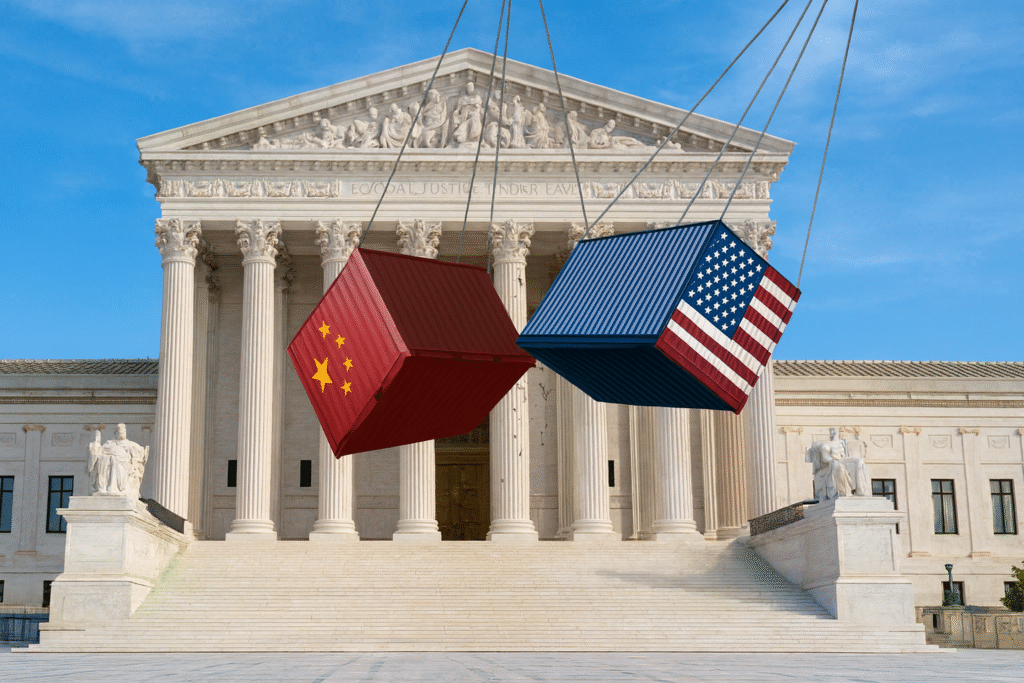Despite a possible Supreme Court ruling against him, President Trump still has several options to maintain his tariffs, especially those on China, which are critical for national security.
On September 9, 2025, the Supreme Court agreed to hear arguments in early November on the legality of Trump’s tariffs imposed under the International Emergency Economic Powers Act (IEEPA). Two lower courts had already ruled against him: the Court of International Trade in May and the Court of Appeals for the Federal Circuit in August, which upheld that decision by a 7–4 vote. Oral arguments are scheduled for November 5, with a decision expected by early 2026.
President Trump invoked the IEEPA to impose tariffs for different reasons depending on the region. Tariffs on European countries sought better trade terms for the United States, while those on China were driven by national security concerns. The goal was to decouple from China and remove it from U.S. supply chains.
Restoring America’s manufacturing base is essential to national defense. In a wartime scenario, the United States must be able to produce its own goods and technology. Continuing to depend on China, America’s foremost strategic adversary, for critical materials and components is both dangerous and illogical.
Every dollar spent on Chinese imports strengthens the Chinese Communist Party (CCP) and funds the People’s Liberation Army (PLA), which could one day use that very technology against the United States.
Unfortunately, many Americans oppose the tariffs because they have increased the prices of cheap consumer goods. They fail to see that short-term inconvenience brings long-term benefits: tariff revenue, greater foreign investment, expansion of the U.S. industrial base, job creation, and enhanced national security. Some would rather pay twenty cents less for plastic flip-flops than support policies that protect America’s independence and safety.
If the Supreme Court rules against President Trump and invalidates the IEEPA tariffs, he would still have several legal tools to impose tariffs on China and other countries. These include Section 301 of the Trade Act of 1974 and Section 232 of the Trade Expansion Act of 1962, though both involve procedural hurdles that could slow their use. Under Section 122 of the Trade Act of 1974, the President may impose universal tariffs of up to 15 percent to address balance-of-payments deficits, but they expire after 150 days unless extended by Congress.
Section 232 tariffs, which target products that threaten national security, remain unaffected by the IEEPA litigation. These currently apply to steel, aluminum, automobiles, auto parts, and copper, with rates from 25 to 50 percent. Trump has used Section 232 successfully in both terms to protect key industries. Section 301 allows the U.S. Trade Representative to investigate and respond to unfair trade practices, providing another route for targeted tariffs if necessary.
Another possibility is that President Trump could simply choose to ignore the Court’s ruling. Critics claim that would exceed his authority, arguing that coequal branches mean the president must obey the Court.
But Trump’s legal team could argue the opposite, that coequal means neither branch is superior, and the Court cannot compel presidential action. Under this view, a Supreme Court decision could be treated as advisory rather than binding.
This argument stems from departmentalism, the theory that each branch has the right to interpret the Constitution for itself. Thomas Jefferson and James Madison first articulated this idea, with Jefferson writing that each department has the right to decide for itself its duty under the Constitution, without regard to what the others have decided.
Liberals and Democrats who believe the Supreme Court can override the president often cite Marbury v. Madison (1803), which held that the Constitution is superior to other federal law and that any law repugnant to it is void. The Court has repeatedly affirmed that all orders and judgments must be obeyed promptly.
Even so, departmentalists argue that when a dispute involves statutory interpretation, what Congress intended in a specific law, the executive branch retains its own authority to interpret and apply that law.
This distinction is central to the IEEPA tariff debate. Critics who invoke Marbury v. Madison to claim that Trump must comply with the Court’s ruling misunderstand the case. Marbury established judicial review over constitutional questions, whether laws violate the Constitution, not over the interpretation of statutes.
The current case concerns statutory meaning, not constitutionality. The Federal Circuit ruled that IEEPA’s authority to “regulate” imports does not include imposing tariffs under the President’s executive orders. The courts did not rule that the Constitution forbids tariffs, that presidential tariffs violate any constitutional provision, or that there is any constitutional limit on tariff authority. They ruled only that this particular statute, the IEEPA, does not grant this particular power.
That distinction is critical. Even if one accepts judicial supremacy in constitutional matters, statutory interpretation operates differently. As head of the executive branch, the president has a legitimate role in interpreting and executing federal law. If Trump views the IEEPA as granting tariff authority while the courts disagree, the dispute is not a constitutional crisis. It is a clash between coordinate branches over statutory meaning.
Even if the Supreme Court rules that IEEPA does not authorize these tariffs, the remedy would not automatically mean an immediate end to all tariffs, refunds of collected revenue, or an admission that the president violated the Constitution.
More likely, the administration would reauthorize tariffs under different legal provisions, apply the decision prospectively, or seek congressional clarification of IEEPA’s scope.
Read the full article here
